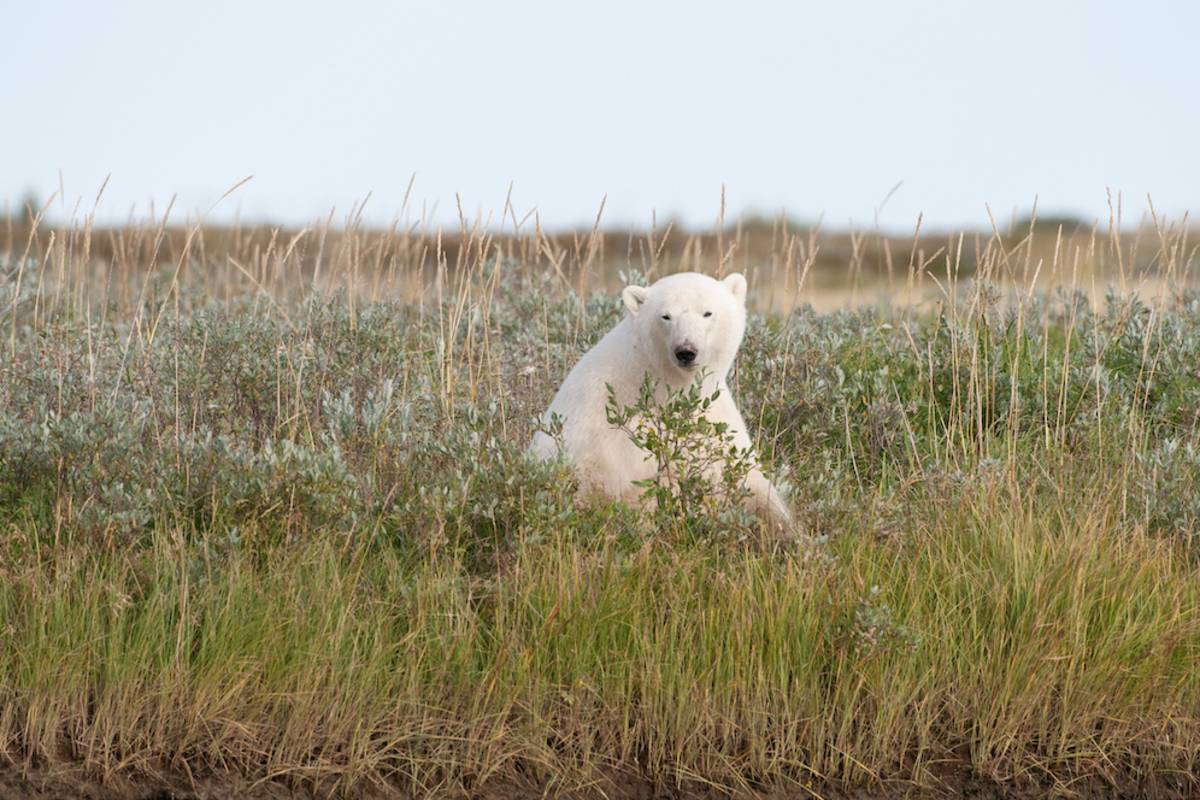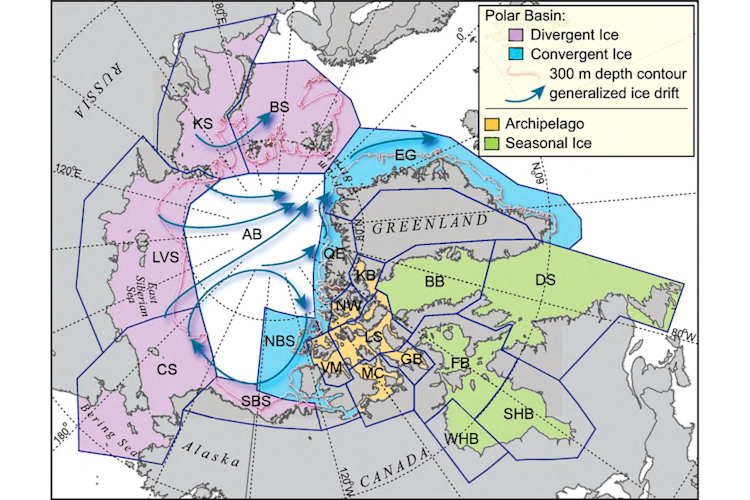North American High Arctic
Summer on the sea ice (usually)
Two of the ecoregions — the Convergent Ice Ecoregion and the Archipelago Ecoregion — are located primarily in the North American High Arctic: the former stretches east from the northern Beaufort Sea across the top of Canada and down along the eastern coast of Greenland, while the latter encompasses the islands and channels of the Canadian Arctic Archipelago. These two regions are similar in that they generally boast sea ice year-round, meaning that polar bears by and large don’t have to make many changes to their behavior from season to season.
However, there are differences even here: in 2022, scientists documented a new possible sub-population of polar bears in southeast Greenland, physically isolated and genetically distinct from its neighbors. Despite being in the Convergent Ice Ecoregion these bears have access to sea ice only from February to late May each year, and spend the rest of each year, including summers, hunting seals from freshwater ice deposited into fjords from constantly calving glaciers.
Arctic Norway, Russia and Alaska
Stay on the ice or head to land?
A third region, the Divergent Ice Ecoregion, encompasses the largest share of the Arctic, stretching from Svalbard and the Barents Sea across the top of Arctic Russia, to the Chukchi and Southern Beaufort seas and coastal Alaska. Here, ocean currents pull sea ice away from the shore as it forms, and while during the cooler months new ice forms to replace it, in summer that isn’t the case. The roughly 2,600 polar bears in the Barents Sea region, therefore, adopt one of two strategies: the majority travel with the ice, roaming vast distances in search of seals and other prey. A small percentage, however, stay behind, focusing their efforts on ringed seals on “landfast” ice — ice that is fastened to the shore — or glacial ice in fjords.
Elsewhere in the Divergent Ice Ecoregion, the bears of Wrangel Island in the Russian Arctic tend to move back and forth from shore to ice much of the year. And, notes Geoff York, Polar Bears International’s senior director of science and policy, the bears on Wrangel that do stay ashore show varied approaches to the summer. "You have some that adopt a strategy of slowing things down and conserving energy, but then you also have bears that are routinely going back and forth between resting areas and feeding areas because they have access to walrus haulouts or because they are feeding on whales that have stranded on shore,” he explains.
Central and Eastern Canadian Arctic
On land for the summer
The fourth region is the Seasonal Ice Ecoregion, where the sea ice completely melts during summer and all the polar bears must come ashore. This region encompasses much of the central and eastern Canadian Arctic, including Hudson Bay, Foxe Basin, Davis Strait, and Baffin Bay. Here, too, the response of bears to the arrival of summer varies.
In Western Hudson Bay, home of the famous Churchill bears, polar bears in summer come closest to replicating the winter strategies of their more southerly brown and black bear brethren. Although it is still possible to see polar bears in the region in the summer months, by and large polar bears spread out along the coast, while pregnant females go further inland. The bears are largely fasting and waiting out the warmer months until the temperature begins to drop again, then they rouse themselves to gather along the coast of Hudson Bay and wait for the formation of new sea ice. During the ice-free period, they lose roughly 1 kilogram of fat a day. (You can see the locations of some of these bears on our Polar Bear Tracker.)
In Foxe Basin, however, says York, the situation is “completely different.” There, he explains, “there are much higher levels of prey abundance and prey type,” so the bears there tend to remain active in summer, “crossing islands in search of a walrus haulout or a stranded whale that they can smell.”


















